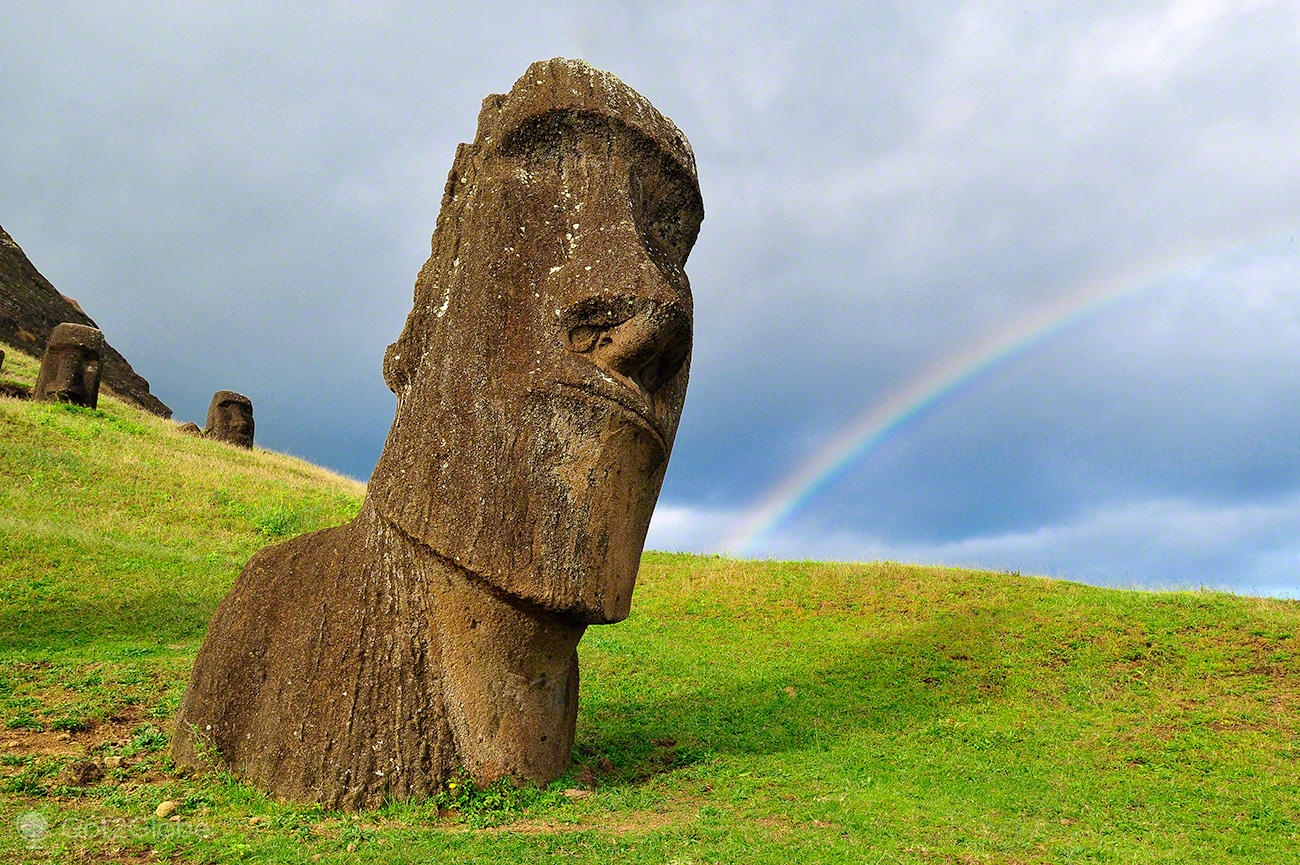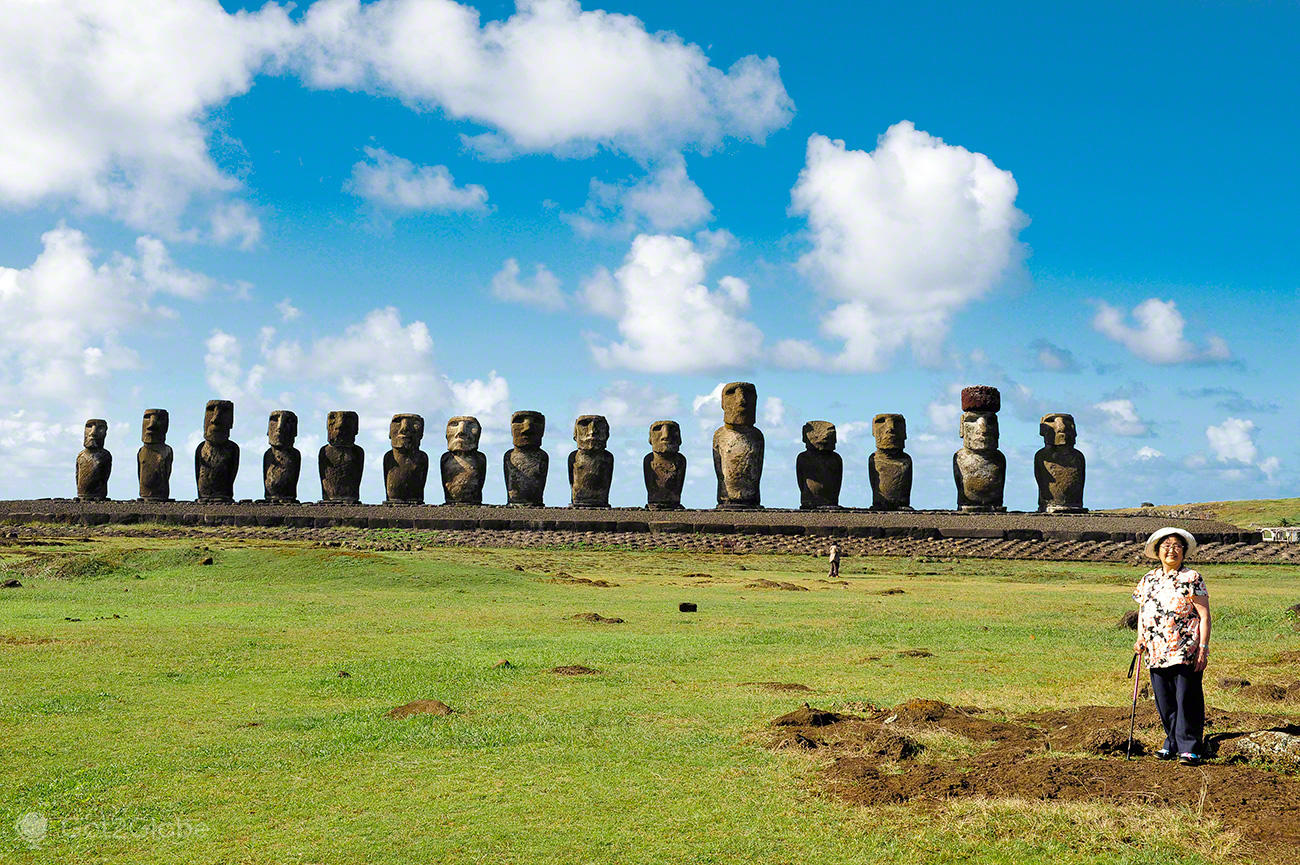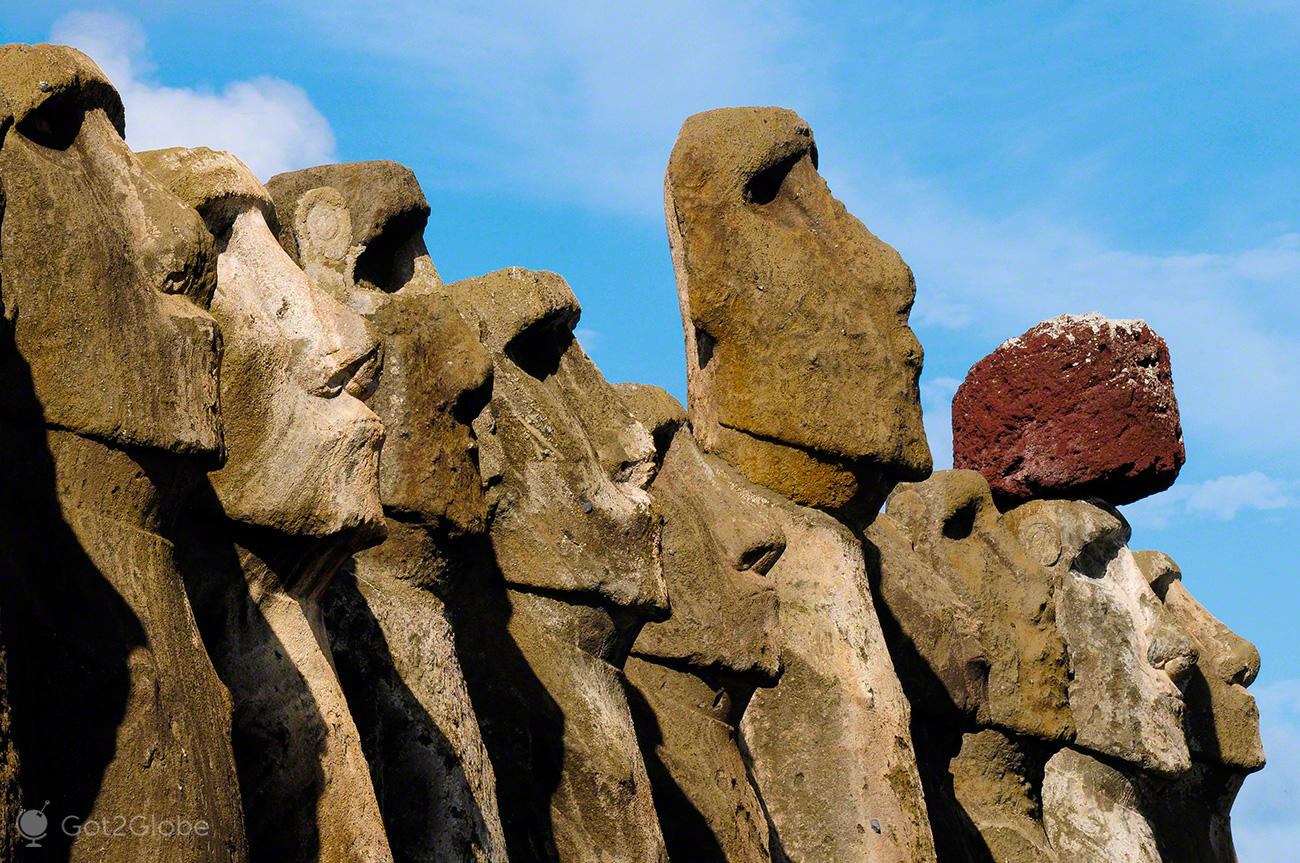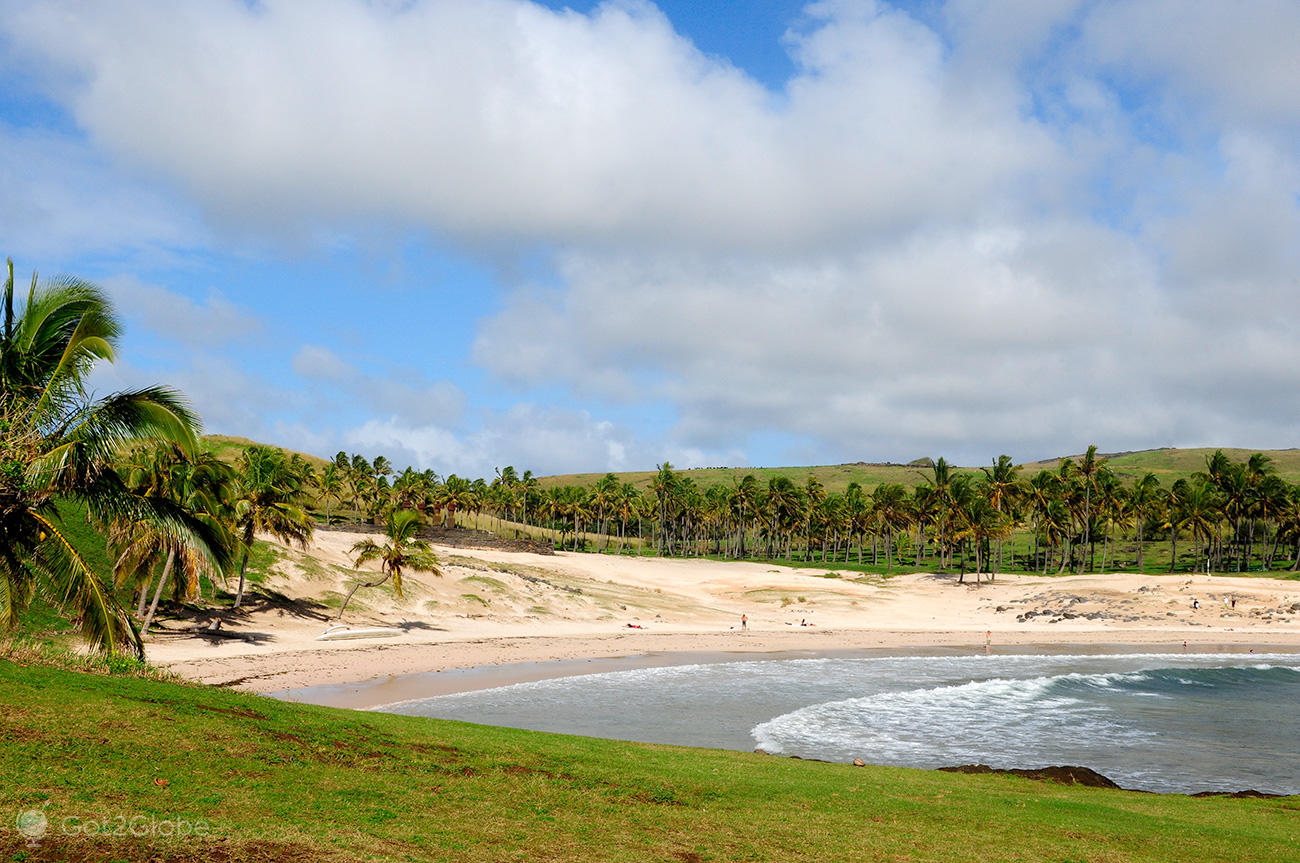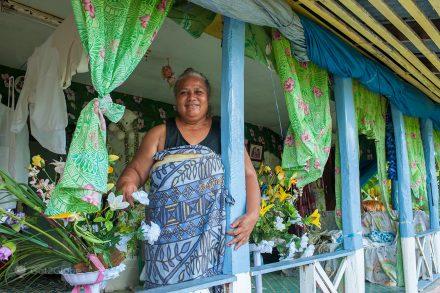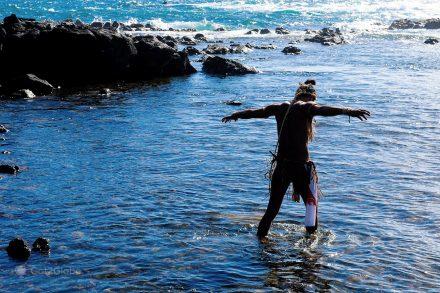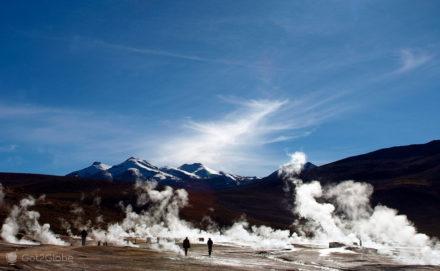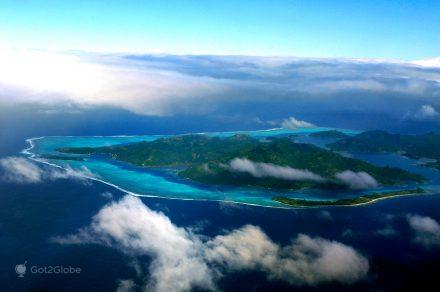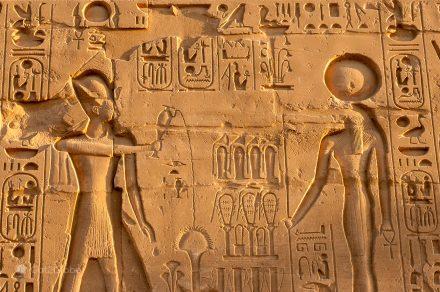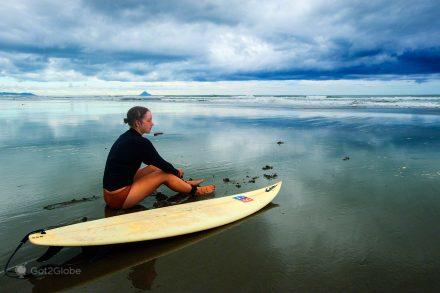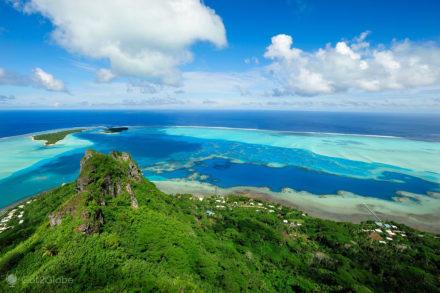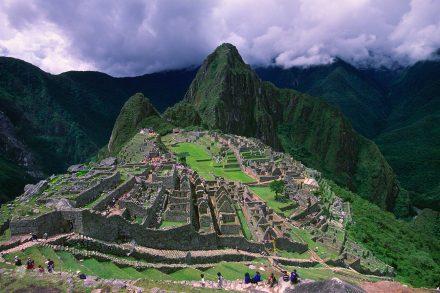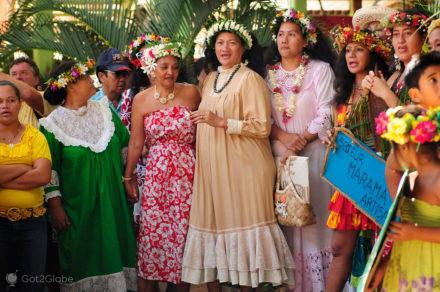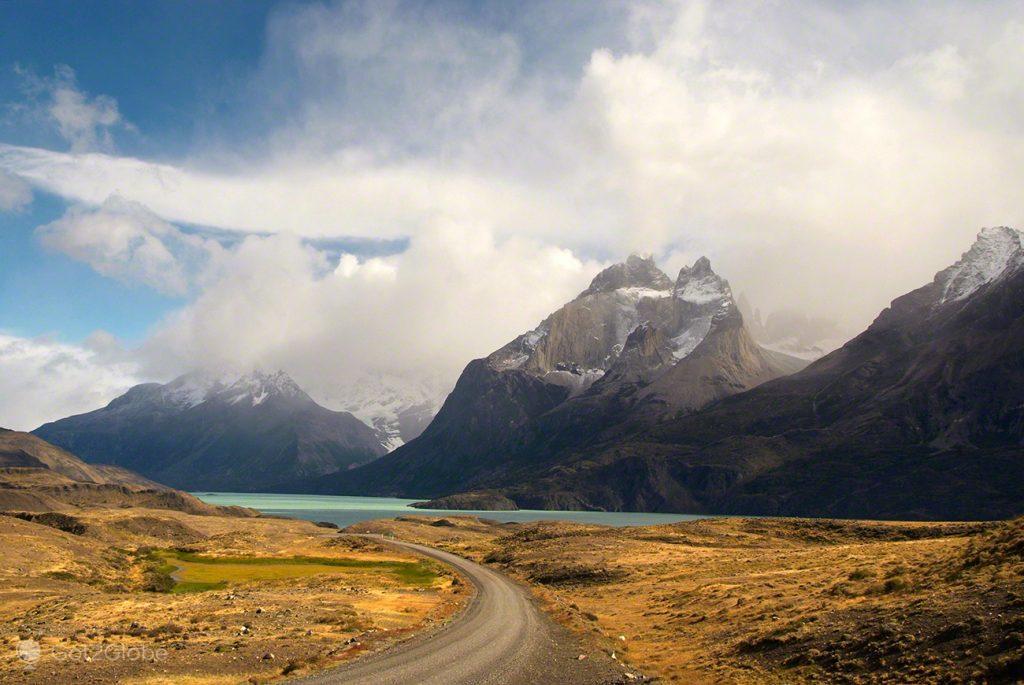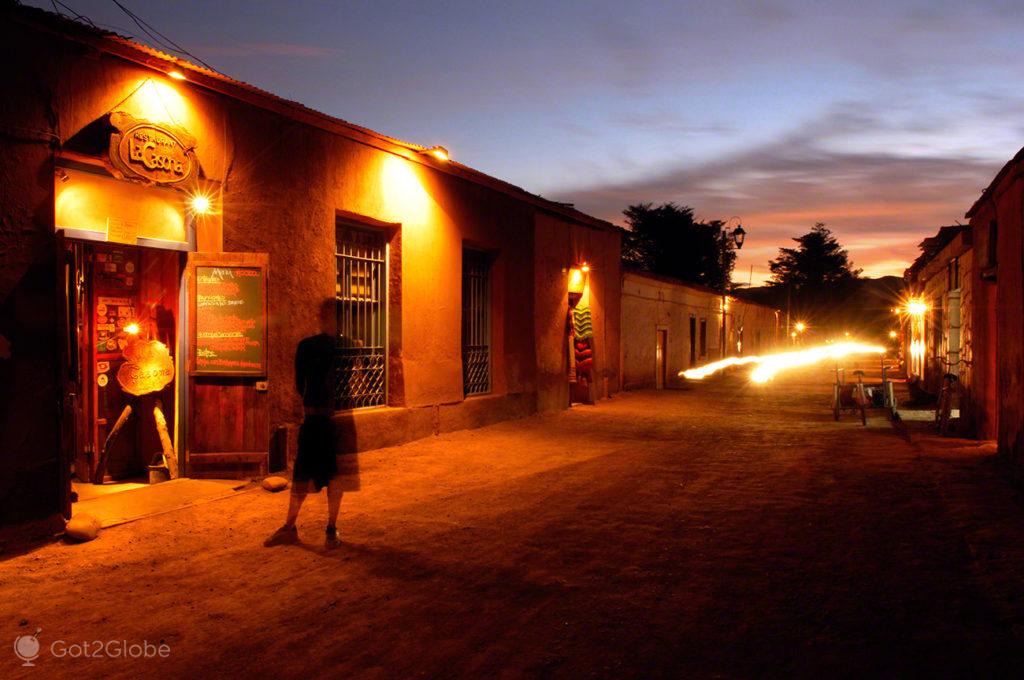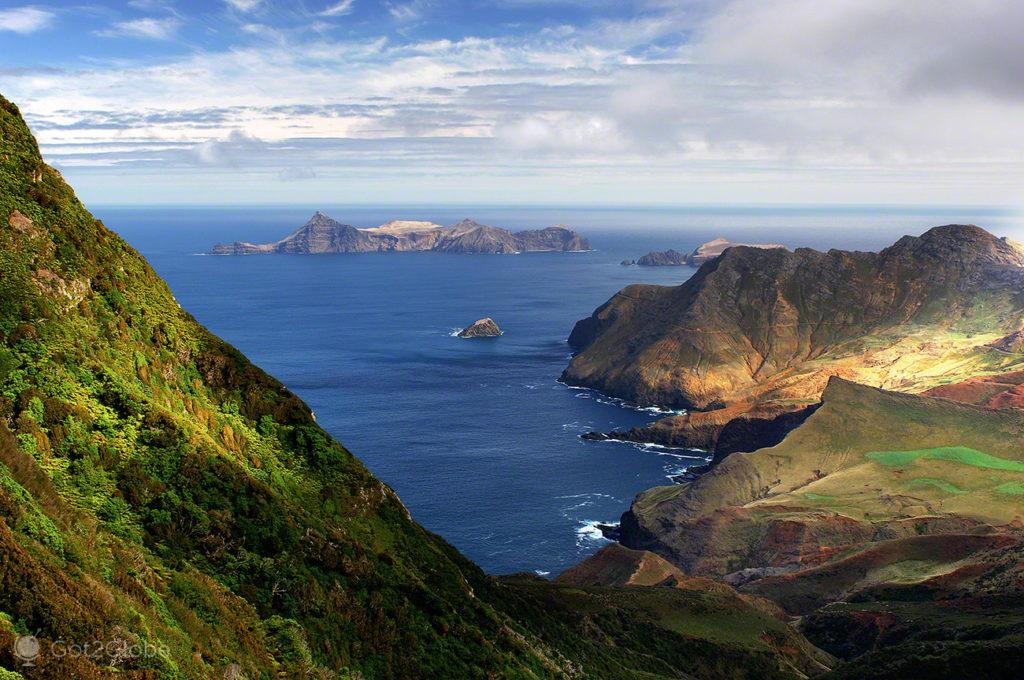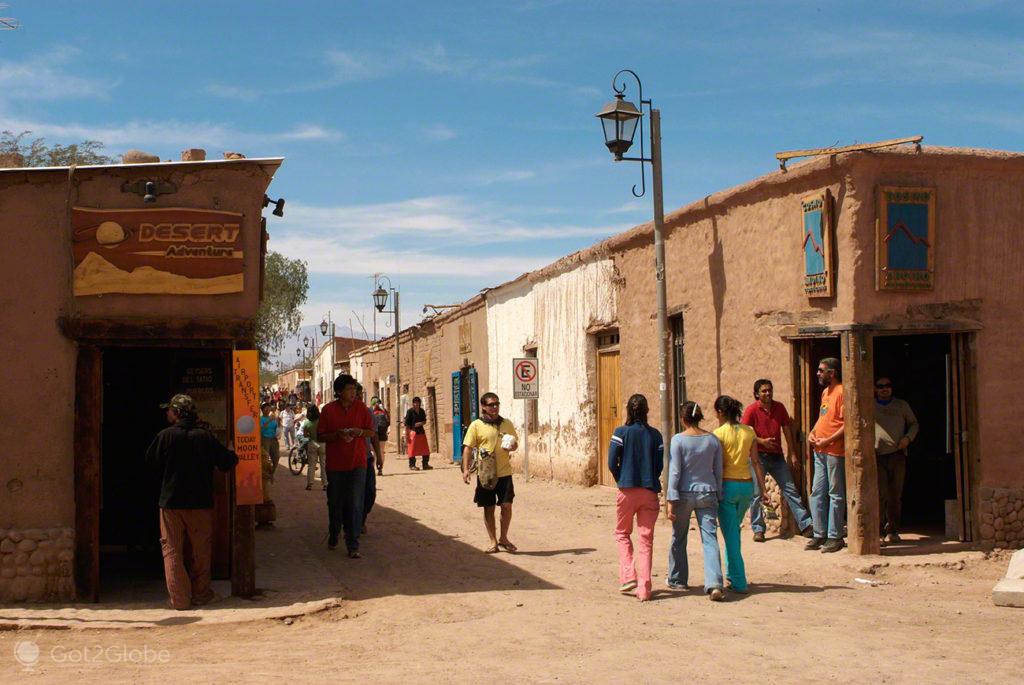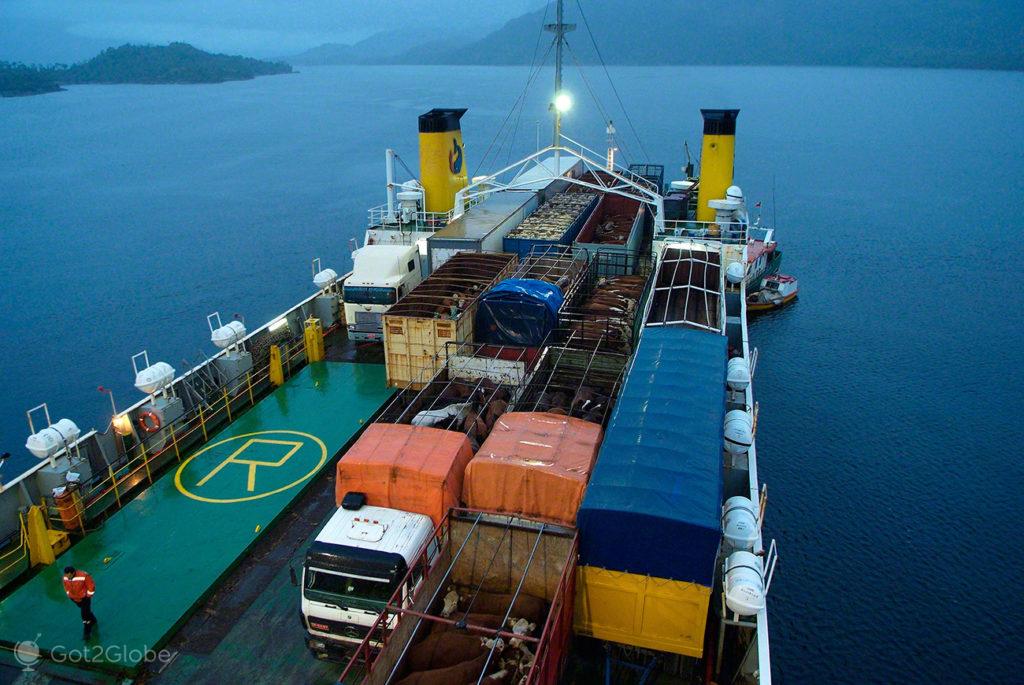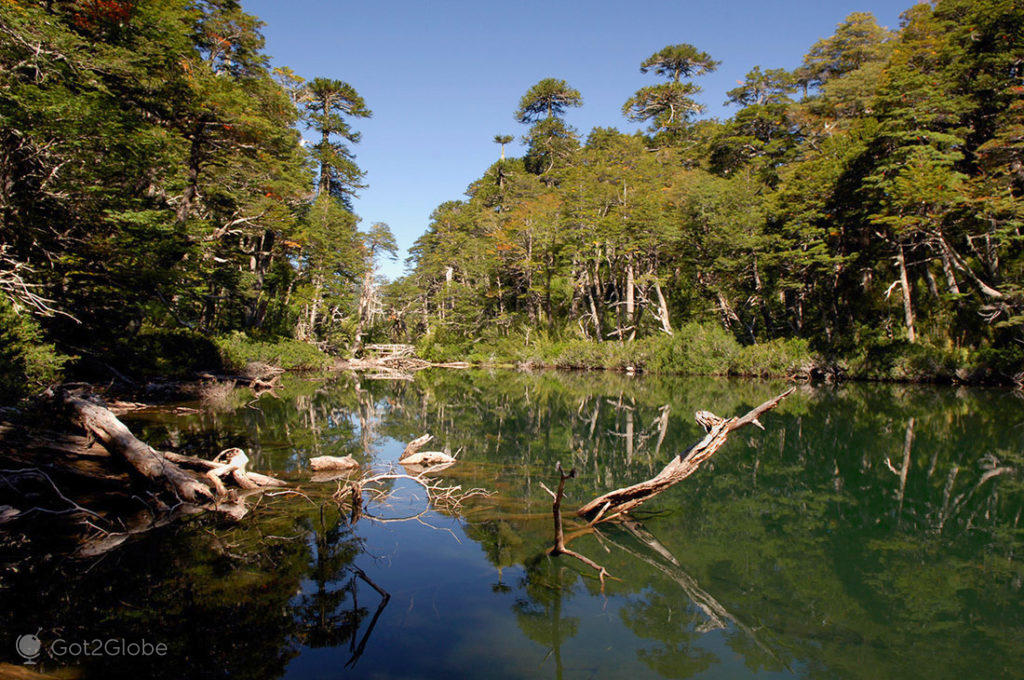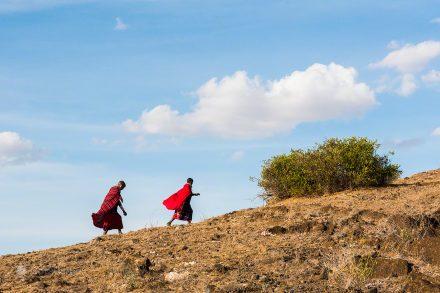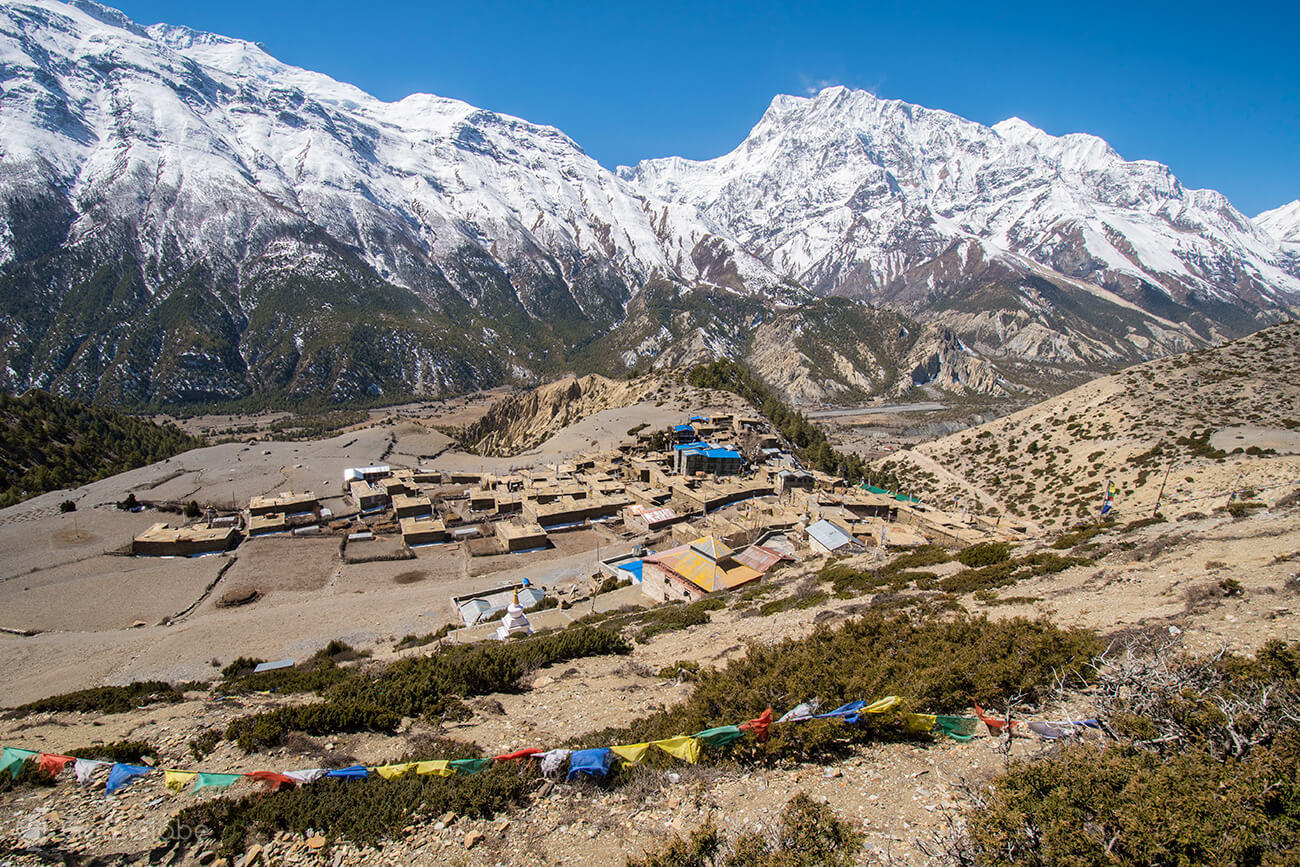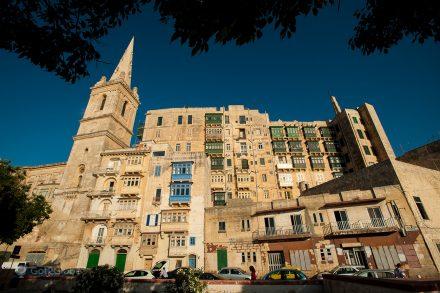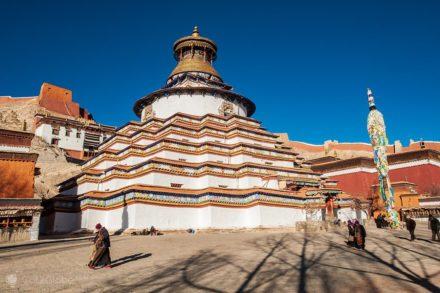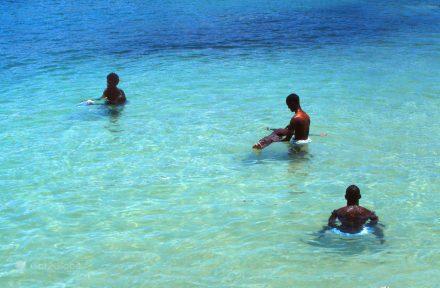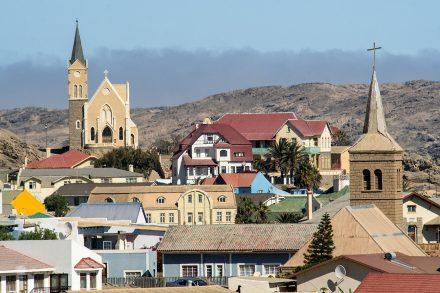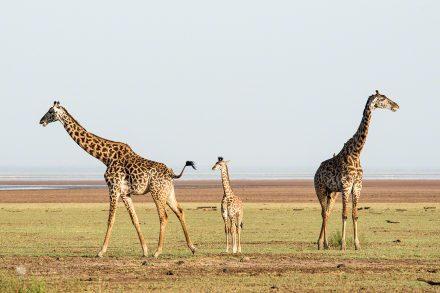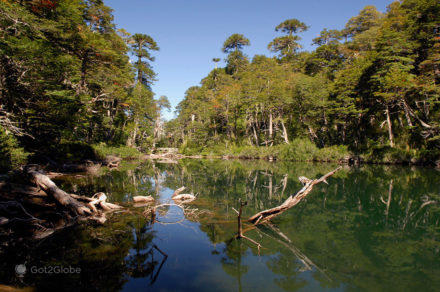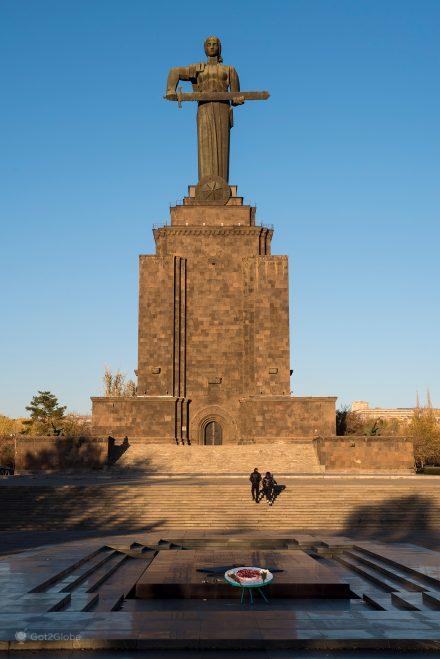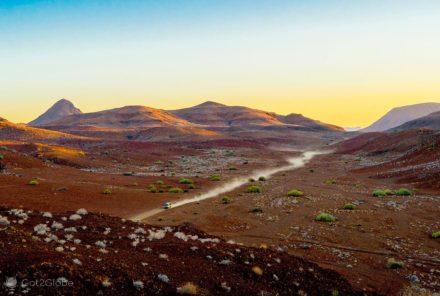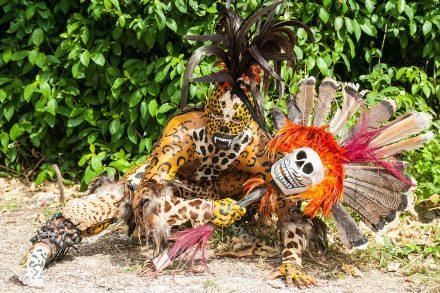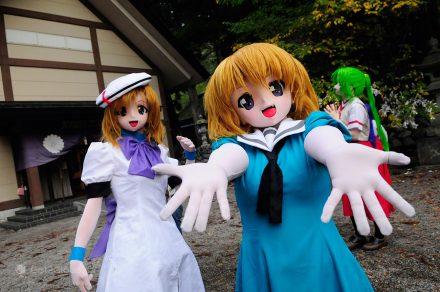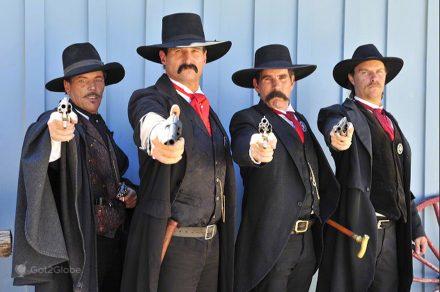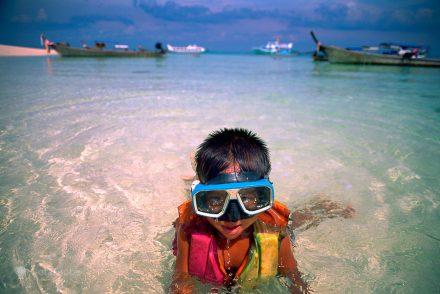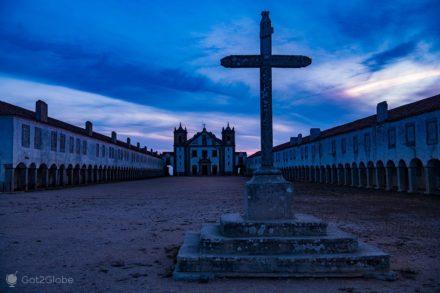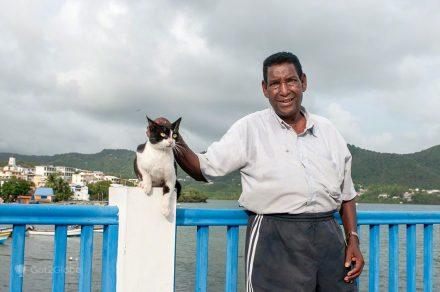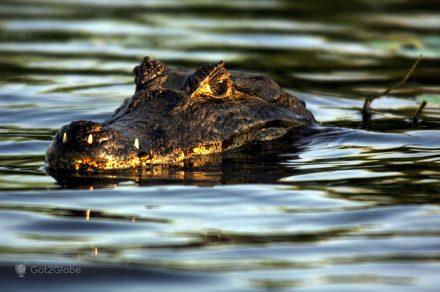No other place is as lonely as Easter Island.
Lying on a small green meadow by the sea, Amparo Ortiz Sainz and Pau Santibañez probe the vast Pacific Ocean in search of something.
The nearest inhabited islands, the Pitcairn, are 2100km away and the Juan Fernández archipelago, of which the Robinson Crusoe Island, 3700km.
Deported from the capital Santiago and their families, the two friends continue to wait for a salvation that does not arrive and that, even if it did, they would have to reject.
The economic situation now more relaxed and stable in the Chile it does not favor all its youth.
Lacking rewarding jobs close to home, the two agreed to move to the most isolated territory of the nation where, taking only finances into account, the separation initially seemed advantageous to them.
The Chilean Duo of “Truman Show”
After three days of inclement weather, a sun that is unusually soft for these tropical latitudes caresses Rapa Nui while the sea calms down.
Amparo and Pau wanted to perfect their skills as beginner surfers, but laziness and easy pleasure got the better of them.
Both they and the plank were on the ground.
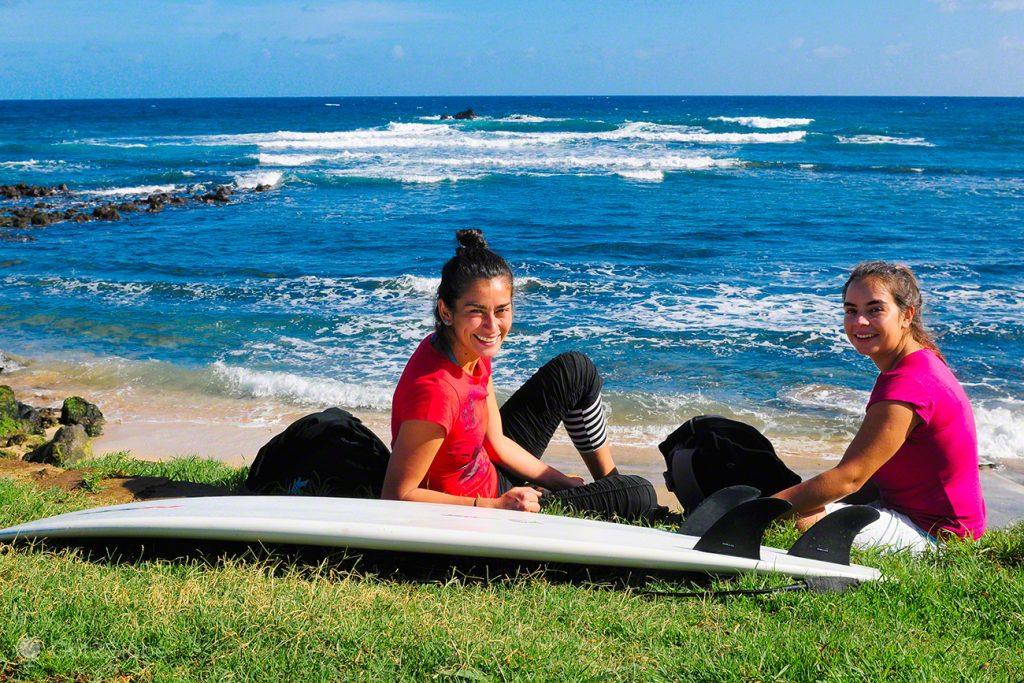
Two Chileans migrated in Rapa Nui, conformed to the “Truman Show” profile of Easter Island
We interrupted a brisk walk along the Hanga Roa waterfront to clarify any doubts about orientation and ended up joining your retreat.
The conversation soon flows with the sound of the waves in the background: "Truman Show“. That's what we used to call our life around here. Remember that scene where Jim Carrey crashes into the studio's invisible capsule? It happens to us every day.
Even visitors like you who stay here for a week or more, discover the moais and the best landscapes, go around the island and then don't know what to do. You must have already started to notice, no? If you like, show up at Matato'a sooner.
It is the only place with animation for many thousands of kilometers.”
We return to the inn that hosts us before nightfall and return to socialize with two Portuguese from Porto who, by mere chance, had also settled there.
Portuguese even in the Navel of the World.
Easter Island was the last of the places where we expected to cross paths with compatriots but, inspired by the historic Portuguese vocation of crossing the seas, Verónica and Miguel had moved from Invicta to study architecture in Valparaíso.
They were enjoying some rather rainy vacation days in those almost illogical confines of the Chile.
On our way back, when we finished counting, it was half of the four Portuguese that we found in a year around the world.
The Polynesian Dances of Matato'a Bar
Night falls and we're really going to take a peek at Matato'a Bar, as Carole, our young French hostess from Papeete –Tahiti I had spent hours bragging about the dance show presented there or, more specifically, the physical shape – let's say – and the beauty of the protagonists.
The bar's name means the warrior's eye.
It is also used by the family group formed in 1996 by Kevamatato'a Atan. Matching, male dances are fast and acrobatic.
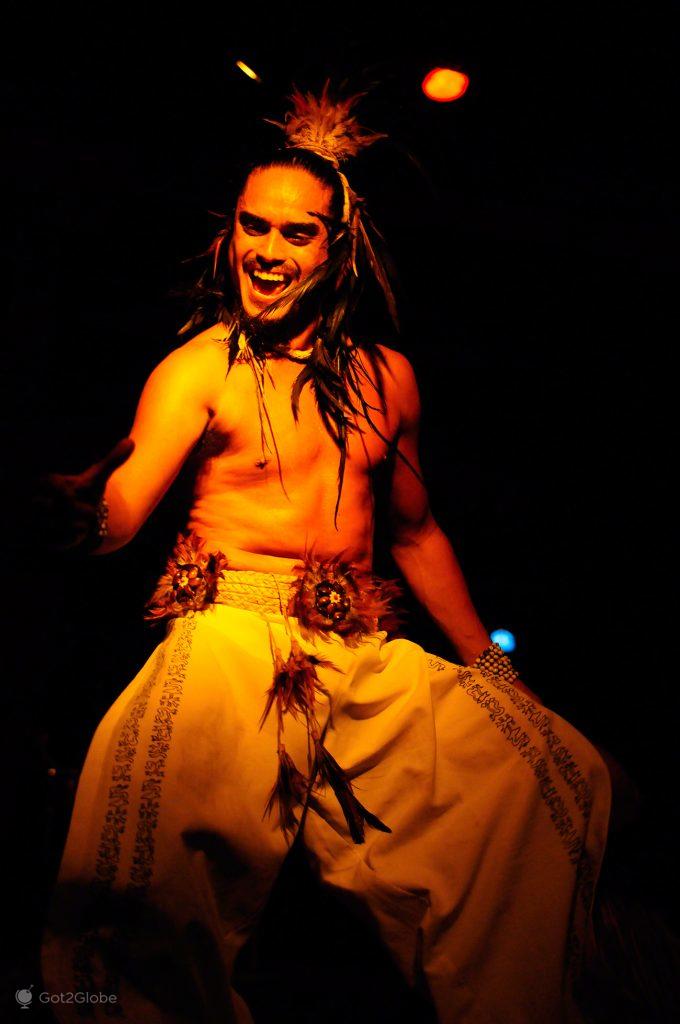
Rapa Nui dancer performs a traditional dance during a show at the Matato'a bar on Easter Island
Dramatized by warm lighting that highlights sweaty bodies and paintings. They are unmistakable marks of a Polynesian genetics and culture that not even the lack of tattoos seems to call into question.
We detect the artistic heritage of what is believed to have been the intensely warlike past of the island.
Although we are in a sector of the Pacific Ocean almost opposite to that of New Zealand, we also identified expressions and movements to which the Maori people could call yours.
puzzle after puzzle
We know that Polynesia holds countless secrets and the lost civilization of Rapa Nui, in particular, generates the most disparate and unexpected theories. The role of your moai population is at the top of the puzzles.
On one of the following sunny days, we inspect the strange formation of Ahu Tongariki, the largest of many others scattered across the island. It consists of 15 tall statues weighing many tons.
We wonder what would have justified the Herculean tasks of its sculpture, transport and positioning.
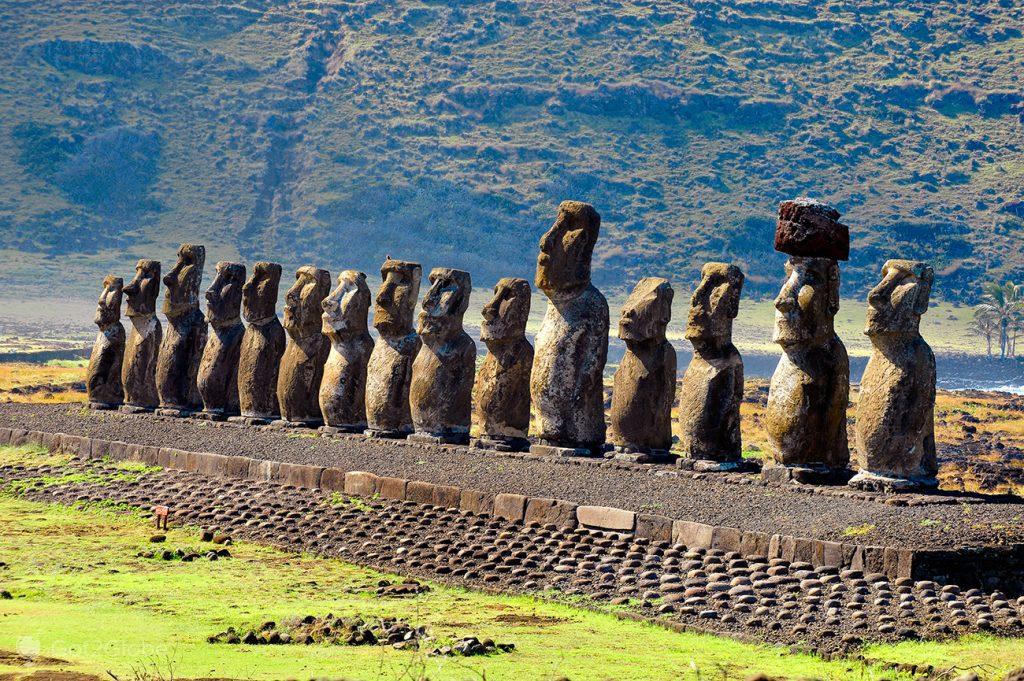
Sequence of moais from Ahu Tongariki, facing inland from Rapa Nui, Easter Island
But we can also imagine the shock of his overthrow by enemy factions during Rapa Nui's civil wars.
And, more recently, of its being dragged inland by the waves of the tsunami that invaded the island in 1960.
We also discover the irony that, after being recovered by a team of Chilean archaeologists, the fifteen moais were repositioned and rebuilt between 1992 and 1995 by Tadano, a company in the country that worldwide baptized the natural phenomenon that had moved them.
From there, we walk to the crater of Rano Raraku, the quarry where, for half a millennium, 95% of the island's monolithic statues were manufactured, until the beginning of the XNUMXth century.
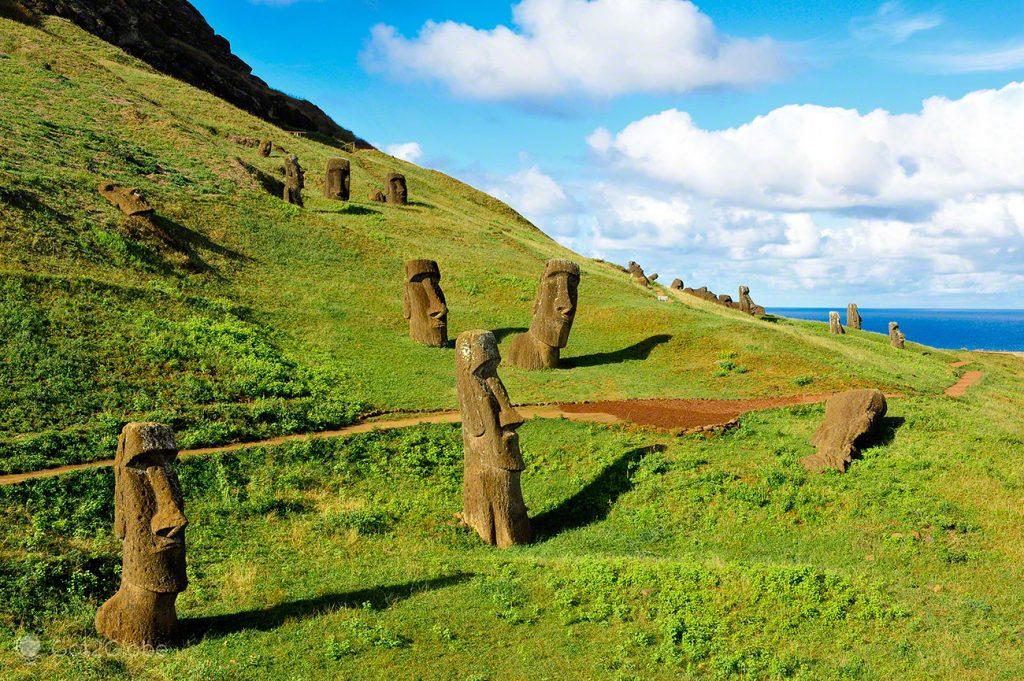
Half-buried moais in the crater of Rano Raraku, the rapa nui quarry where, for half a millennium, 95% of Easter Island's monolithic statues were manufactured
Among a mute community of 397 specimens, we discovered several gigantic moai (up to 21.6 meters and 270 tons) half-carved and half-buried.
And so many others, already standing but eroded, including the picturesque Tukuturi, smaller, with a beard and kneeling.
While few doubts exist as to the provenance of obscure idols, that of the civilization that conceived and idolized them is not scientifically unequivocal.
The Origin and Fate of Rapa Nui Civilization
Moa Teru Eru, one of three thousand three hundred surviving rapa nuis on the island, will have an opinion but seems more concerned about the continuity of her people's culture.
Nationalist and willful, he became known for his love of the cause and surprises us in full propagandist action when we photograph the pensive and inquisitive moai with white eyes and intriguing gaze of ahu Tahai.
He appears out of nowhere, not dressed in the fashion of his ancestors. She wears a petticoat, a scarf, bracelets and a headband that holds her hair, which is also trapped by a large bun on the back of her neck. All garments and props are natural, made from dried fibers from the island's vegetation.
As is the portable pole of the red and white Rapa Nui flag that waves and waves proudly towards the ocean while delivering small ceremonial speeches in the local dialect.
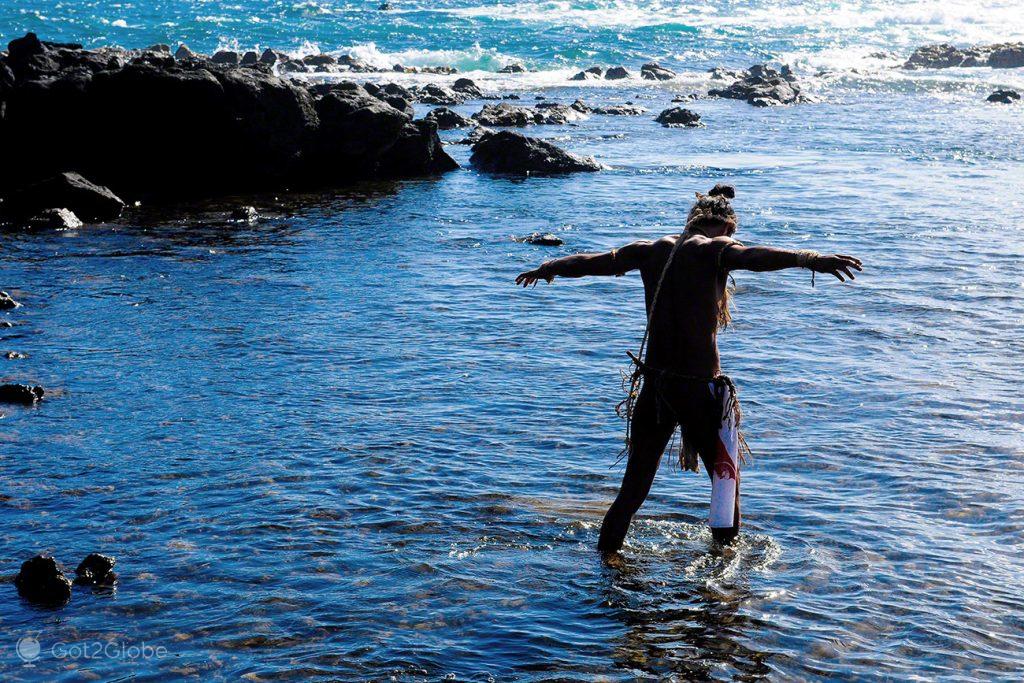
Moa enters the shallow sea of Easter Island, with open arms, in a pose evocative of the rapa nui cult of tangata manu.
It seems to us to call the ancestral peoples to celebrate their deeds. If he does, the appeal is drowned out by the contrary wind and the roar of the waves. It is lost in isolation and in the unconfirmed origin of its almost vanished civilization.
These days, the most popular answer to the origin of the Rapa Nui people is that they came from the Marquesas or Gambier archipelago around the fourth or fifth century.
It is believed that one of these archipelagos or even both would also have provided the first inhabitants of the Hawaii and New Zealand.
That its inhabitants had reached the new island territories in the same way: in huge double canoes prepared to transport food and domestic animals necessary for colonization.
Thor Heyerdahl and Theory at the Edge of Theories
The most famous dissenting hypothesis was formulated by the writer and Norwegian adventurer Thor Heyerdahl who traveled to the Peru, there he built a rudimentary sailing raft which he called Kon-tiki
And that he crewed it with five other companions for 101 days, until the raft ran aground on a reef in the Tuamotu group, almost 7000 km later in the Pacific Ocean.
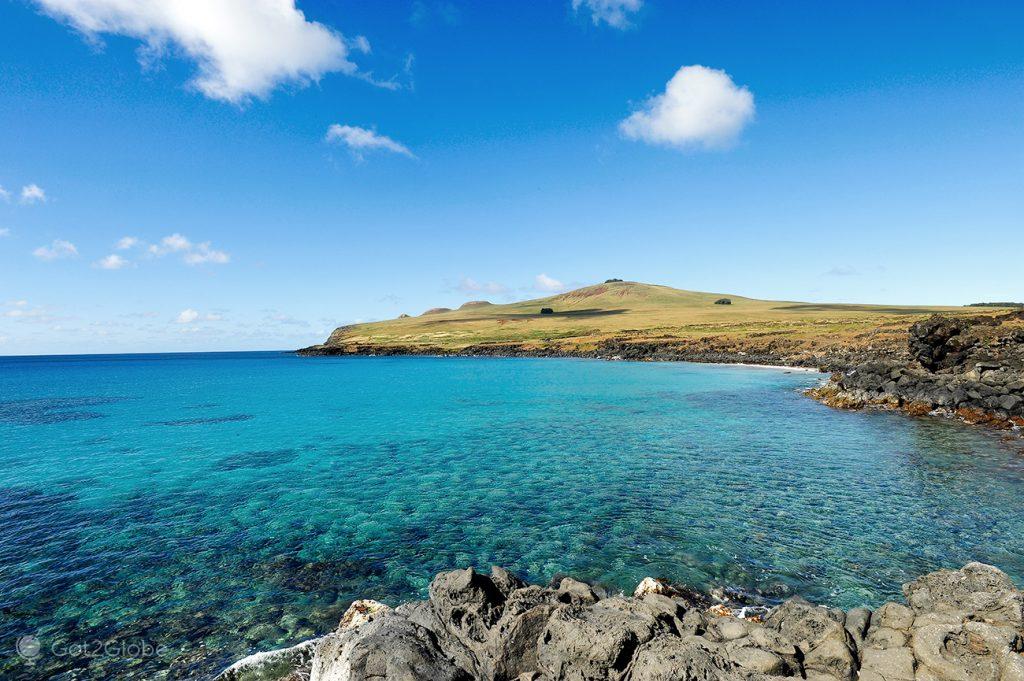
Inlet of translucent and calm waters of Rapa Nui, Easter Island
Based on the excavations he carried out in the Aku Aku (Rapa Nui area), the experience of the sea expedition and other historical coincidences – for example, the existence of sweet potatoes on the island, Heyerdahl argued that Rapa Nui was occupied by ancestral Peruvians or that, in the worst case, he would have contact with those people.
The various genetic and anatomical analyzes carried out on the natives confirmed a much more probable origin from the Gambier or Marquesas. Furthermore, a crewman that James Cook had recruited in Bora Bora was able to communicate with the natives.
Nor would it take that much. Like any visitor who arrives from those stops, we easily recognize ourselves ioran (Hello), maururu (thank you), among other elementary expressions.
Even so, in 1999, a trip was organized with boats from those regions that sailed from Mangareva (Gambier archipelago) to Rapa Nui in just 19 days. Evidence always predominated.
Unsurprisingly, Easter Island has long been considered the southeast apex of vast Polynesia.
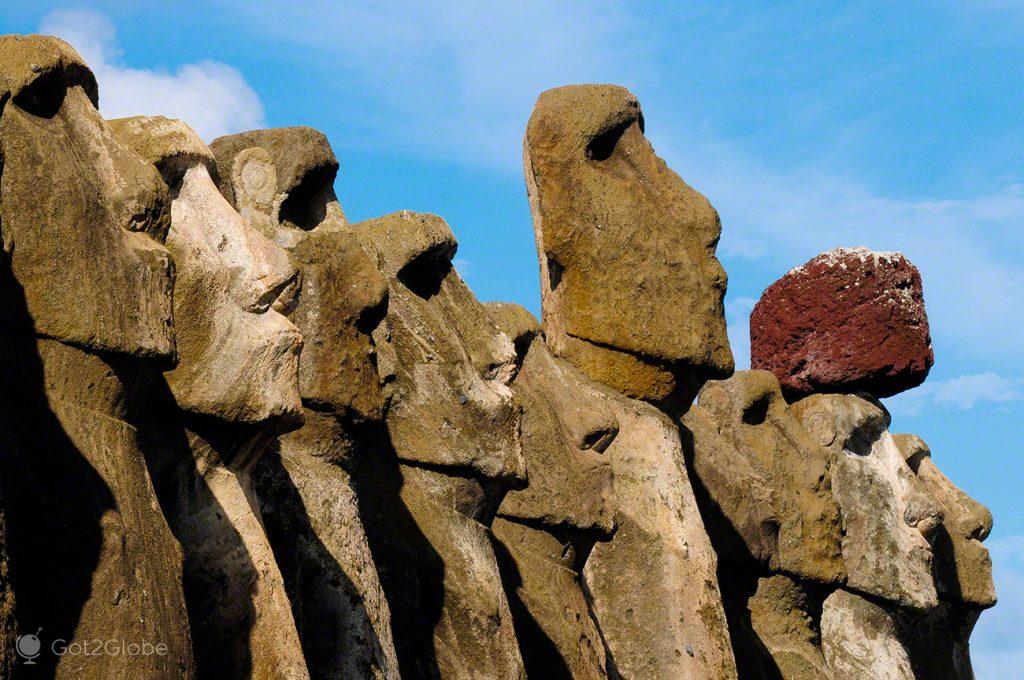
Section of Ahu Tongariki, the largest moai formation in Rapa Nui, Easter Island
While still in Papeete, Carole had asked us to take some typical Tahitian skirts on the plane that Ika, one of the Rapa Nui friends she had made on one of her numerous visits to the island, had asked her for.
When we hand them over, Ika rejoices: “That's right! thank you very much! We will use them in our shows.
We're also rehearsing dances from the Tahiti and we wanted to have original props. They just made me very happy.”
That reaction became our ultimate proof that, beyond DNA, the natives of Easter Island felt themselves to be Polynesians, despite the successive intrusions and foreign invasions of their land.
The Enigmas of the Rise and Fall of the Moais and Civilization Rapa Nui
In 1700, Spanish vessels had long used the southern passages from the Atlantic to the Pacific opened by Fernão de Magalhães and Sir Francis Drake during the XNUMXth century.
It was Jacob Roggeveen's Dutch expedition that was the first to come across tiny Rapa Nui, on Sunday Easter Holiday of 1722.
There, the crew found the natives friendly.
He was astonished by the presence of the moais that the natives carved as caricatures of their own images, with long ears (the natives used pieces of wood on the lobes that stretched them) and that they revered with small fires and prostrating themselves in front of the statues.
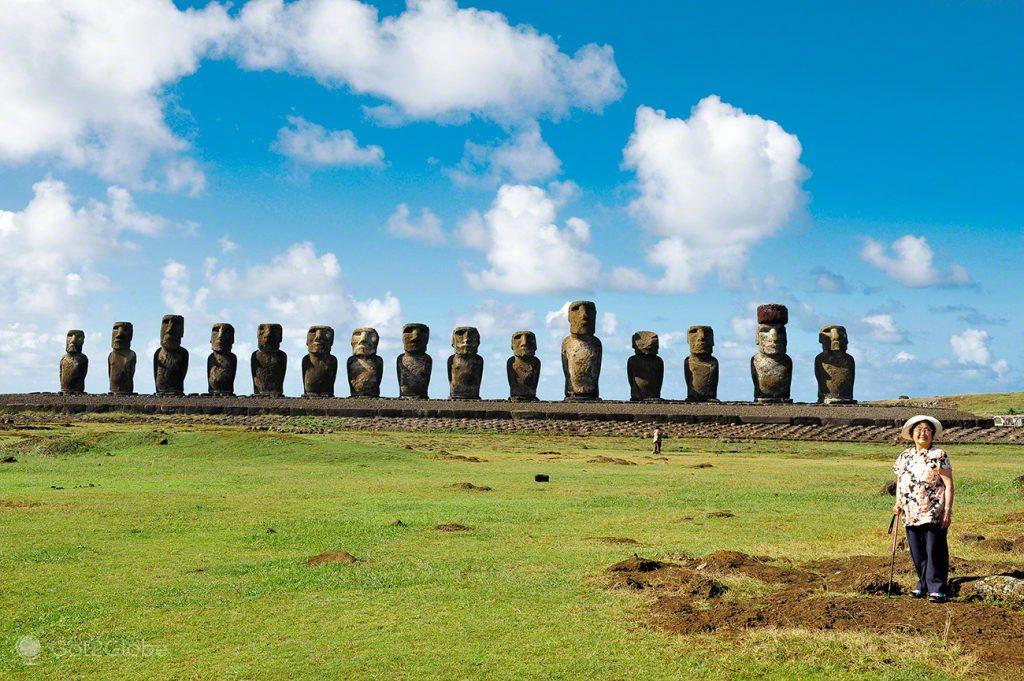
Asian tourist poses in front of the moai formation of Ahu Tongariki, the largest in Rapa Nui, Easter Island.
The next visitors were Spanish explorers who, as expected, left the first marks of Christianity: three wooden crosses on hills in the Poike area.
When the inevitable James Cook arrived in 1744, he no longer saw those crosses.
Instead, he found much of the land uncultivated and signs that the statues were intentionally knocked down – what the natives called houri moai – had been happening for some time, as a consequence of internal divisions and conflicts.
Rapa Nui. On the Screen of an Easter Island Local Pseudo-Cinema
Desperate with bad weather, after reading about the following episodes of the story, we ended up surrendering to its Hollywood version.
The hotel advertised, on posters posted throughout the capital, the projection of “Rapa Nui”, the cinematographic work of the director Kevin Reynolds, co-produced by Kevin Costner, which gives great prominence to the Rapa Nui cult of the Birdman.
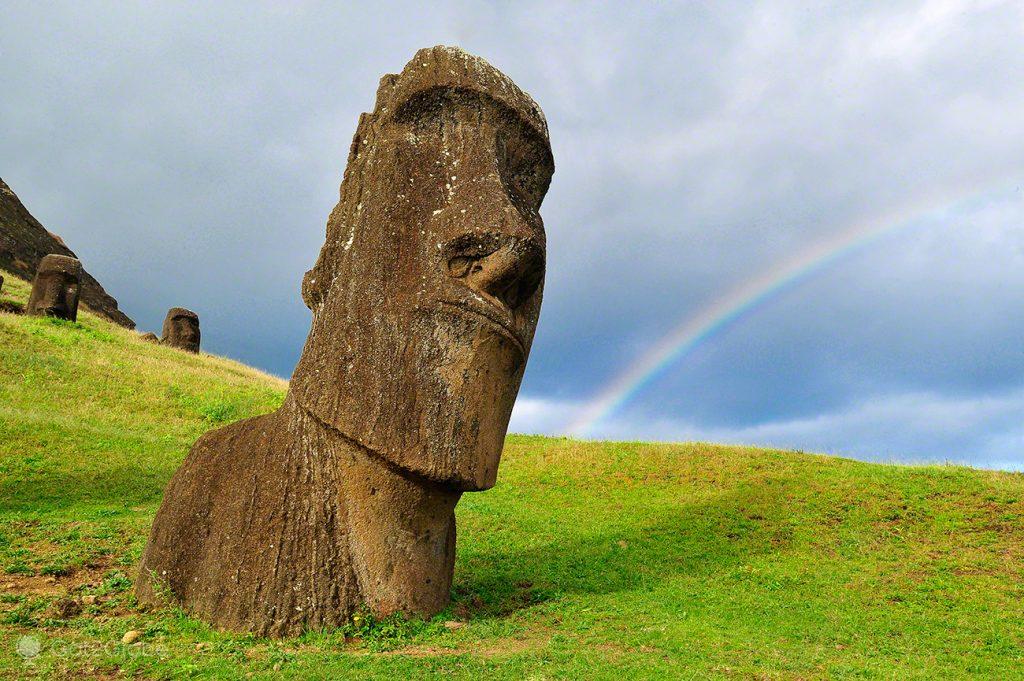
A half-carved moai abandoned in the Rano Raraku quarry, once used by the natives of Rapa Nui to carve their mythological figures, from today's Easter Island
Even though we are suspicious, we show up at the reception at the appointed time. A Chilean maid welcomes us with indifference, little surprised that we are the only spectators at the pseudo-session.
It leads us to an adjoining living room. There, he turns on the device that immediately projects the film, over a snooker table and against the opposite wall. Then he says goodbye: "Good, that enjoy it! Yo ya saw him five hundred times".
We soon realized that the two Kevins had bet on action and romanticism but that, in the name of profit, they had also sacrificed the presumed veracity of some aspects. Still, the fantasized plot did not omit what is thought to have been the cataclysmic heart of the matter.
Archaeological records prove that, at the time of the arrival of the first inhabitants, several species of trees thrived on the island.
Including what could have been the biggest palm trees in the world at the time, the Aphitonia zizyphoides e Elaeocarpus raretongensis.
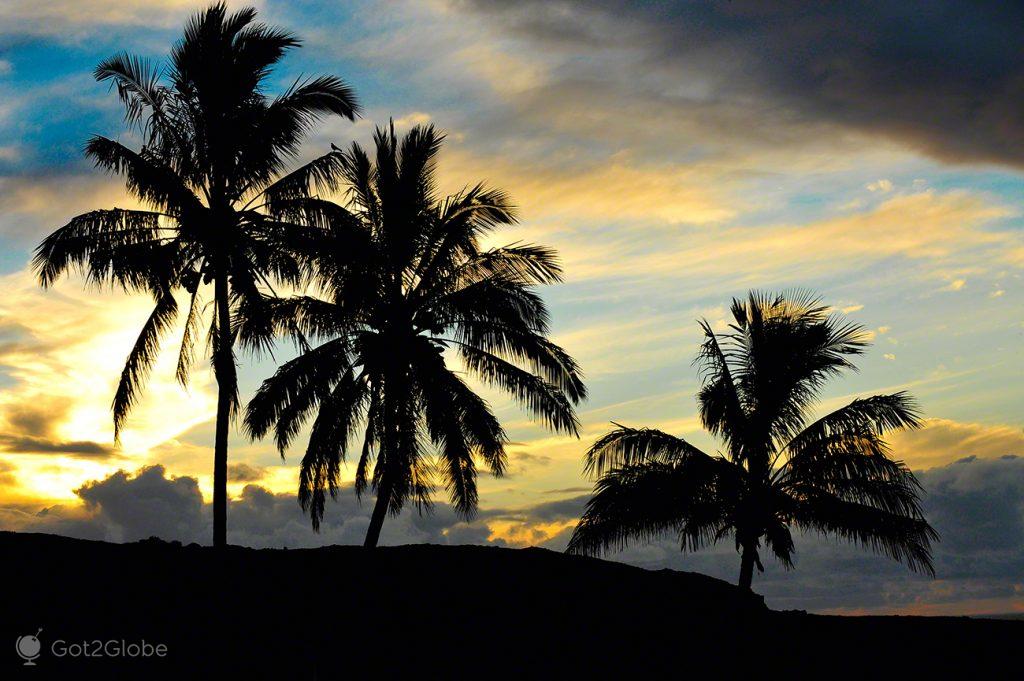
Silhouette of palm trees from Anakena Beach, allegedly some of the few spared by the Rapa Nui civilization.
The Most Likely Hypothesis for Rapa Nui's Decline
But its use in the unbridled production and transport of moais would have caused tragic deforestation and consequent environmental degradation.
Building efficient fishing boats will have become impossible.
And this led to the abrupt extinction of land birds – chickens are believed to be the main source of protein – and a drastic decline in marine birds. Jared Diamond, an American scientist dared to suggest that cannibalism may have followed.
Whether or not all of this is true, something made the population go from almost 15.000 inhabitants, at its height, to around 2000 when the Dutch discovery of the island.
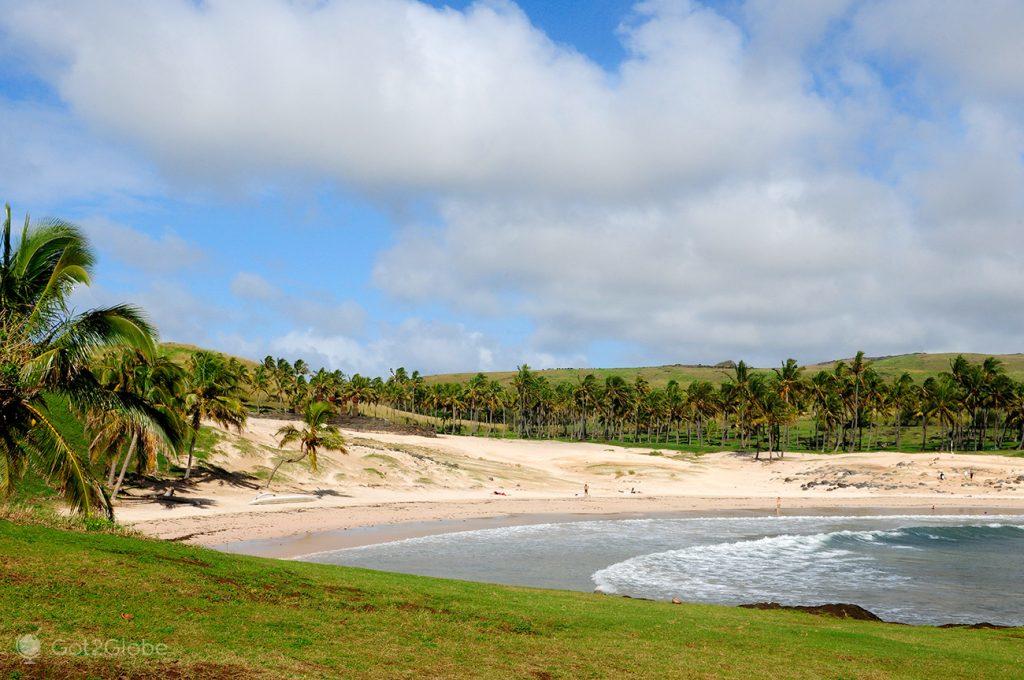
Anakena Bay, one of the few white sandy beaches on Rapa Nui, Easter Island.
The multimillion-dollar technology used raised the budget of “Rapa Nui”, the film, to 15 million euros.
He revealed to us the homonymous island, the scenarios in which the race was taking place and its most chilling moments in plans and perspectives that we could not aspire to.
But it didn't show us the living landscape. Dissatisfied, the next day we rented a small jeep, climbed mud roads and huge puddles until we conquered the surreal scenery of the island.
Chile's Nearly Unchallenged Annexation of Rapa Nui
Food and other essential livelihood resources have recently been supplied by the unlimited potential of air supplies from the United States. Chile which inaugurated its colonial yoke in 1888, after subtracting other territories from the Peru and to Bolivia in a euphoric expansionist impetus.
Even so, we couldn't avoid some apprehension in the face of hyper-inflated prices due to record-breaking insularity. After all, we had been traveling for nine months.
Like the millenary forests of Easter Island, our fragile bank accounts were suffering desperate losses.
"Chiquillos, los de Lan Chile will not bring us anything for some time! What a good thing the gringos have prepared the track to receive the emergency space shuttle” jokes Dona Teresa, the owner of the Cabañas Vaianny inn, when she sees us repeat the canned lunch for the third time”.
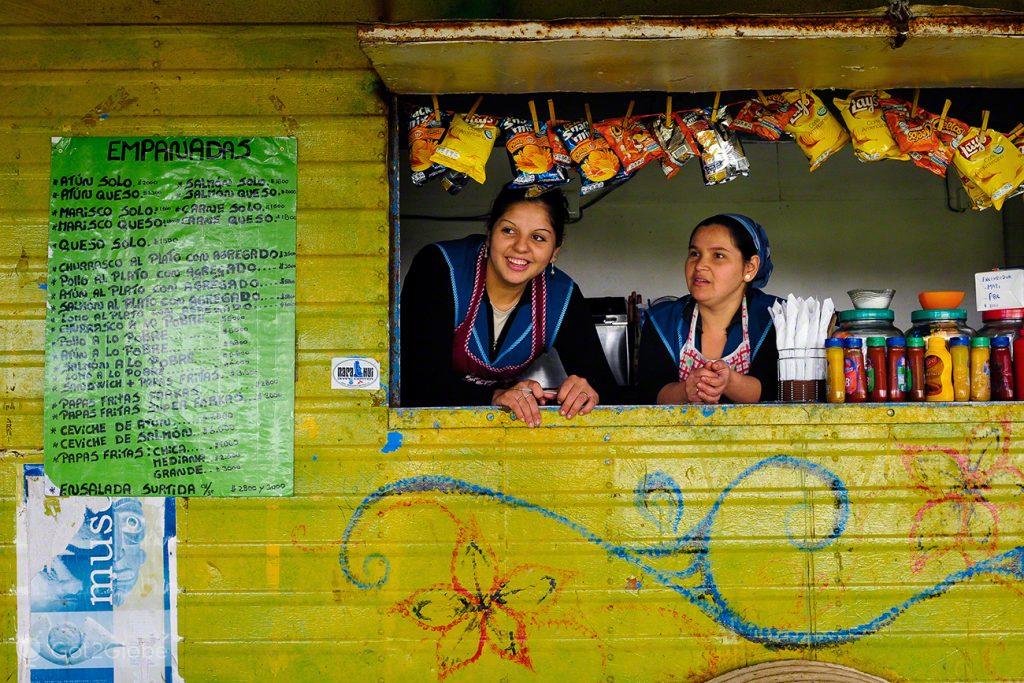
Chilean maids in a trailer that sells empanadas and other Chilean snacks.
The Routine Life of Hanga Roa, the Capital of Rapa Nui and Easter Island
Like Pau and Amparo, his family began to suffer from the abandonment of the mainland. But time passes.
Sarah sometimes.
Even in a tiny space like Hanga Roa, rewarding routines fit: “In the morning, to leave my nieta in the school, I just have to cross the street. Afterwards, I carry all my life here near".
Even with terrible quality and always “rainy”, the Chilean soap operas and other regrettable TV programming seem to disguise a void that we dare not guarantee exists.
On the other hand, the windowless and musty rooms of your rental home may not aspire to the level of sophistication of the pretentious Explora hotel, almost 6 miles away, but they sustain your banished clan.
Similar logic justifies that the Chilean population already makes up 40% of the 5000 current inhabitants of the island. Most settlers even teamed up with Rapa Nui partners. That doesn't stop protests against the Santiago government's frequent disregard for indigenous rights.
In spite of the cultural and land usurpations, Chilean citizenship was only granted to the Rapa Nui in 1966.
Moa assures us that he prefers his strategy. End your ceremony at ahu Tahai. Soon after, he realizes that we are Portuguese journalists.
He insists that we accompany him by taxi to Anakena, the place where he had planned to promote rapa nui wisdom and values.
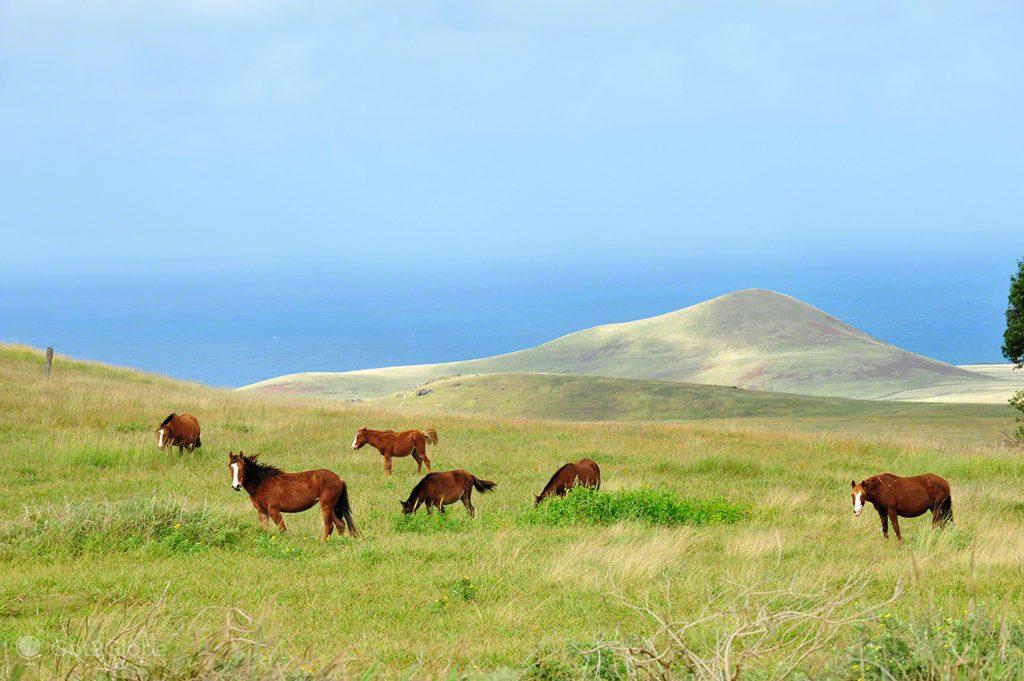
Horses graze in a lush meadow of Rapa Nui, Easter Island
The path crosses green meadows where distant herds of horses graze and ends in view of small palm groves.
When we arrive, the beach is full of Chilean and foreign vacationers.
Moa announces itself with the wind. We lost him, in a flash, to a curious crowd of women and children to whom he dedicated himself to explaining ancestral Polynesian techniques for using coconut fibers.
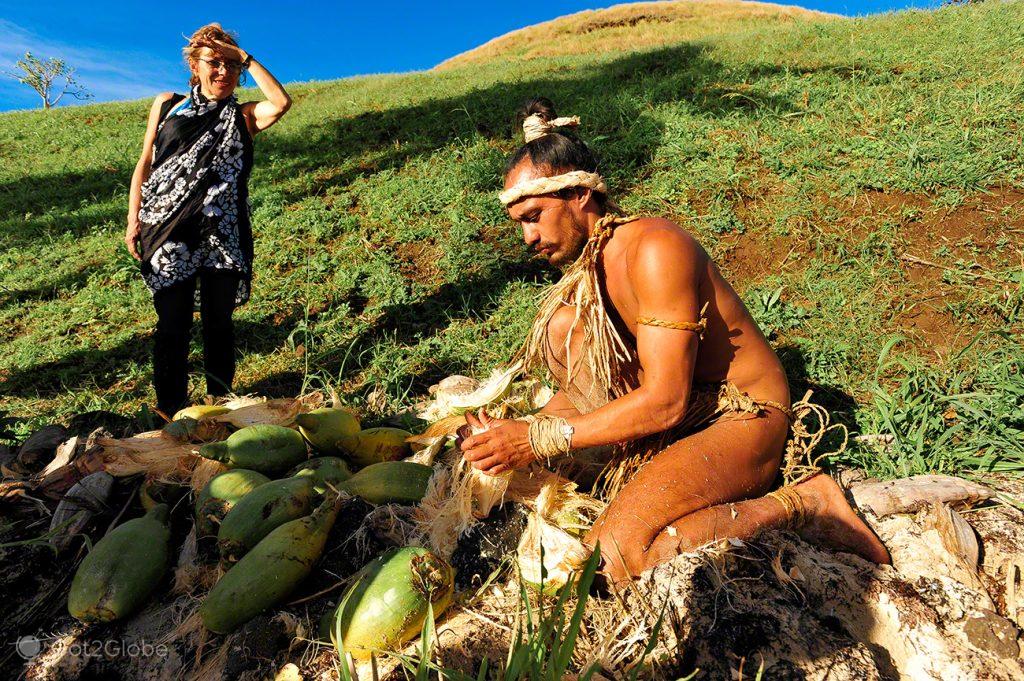
Moa Teru Eru peels coconuts for a Chilean tourist.
We need to recover energy. Not on purpose, we spot several bar mobiles on the opposite side of the bay and we move to one of its untidy terraces.
It is mid-afternoon and the supply is already scarce. In the absence of rapa nui specialties, we surrender to the colonial solidity of the empanadas.
The Ahu Ature Huki, rebuilt by Thor Heyerdahl with the help of the islanders, it is only a few dozen meters away.
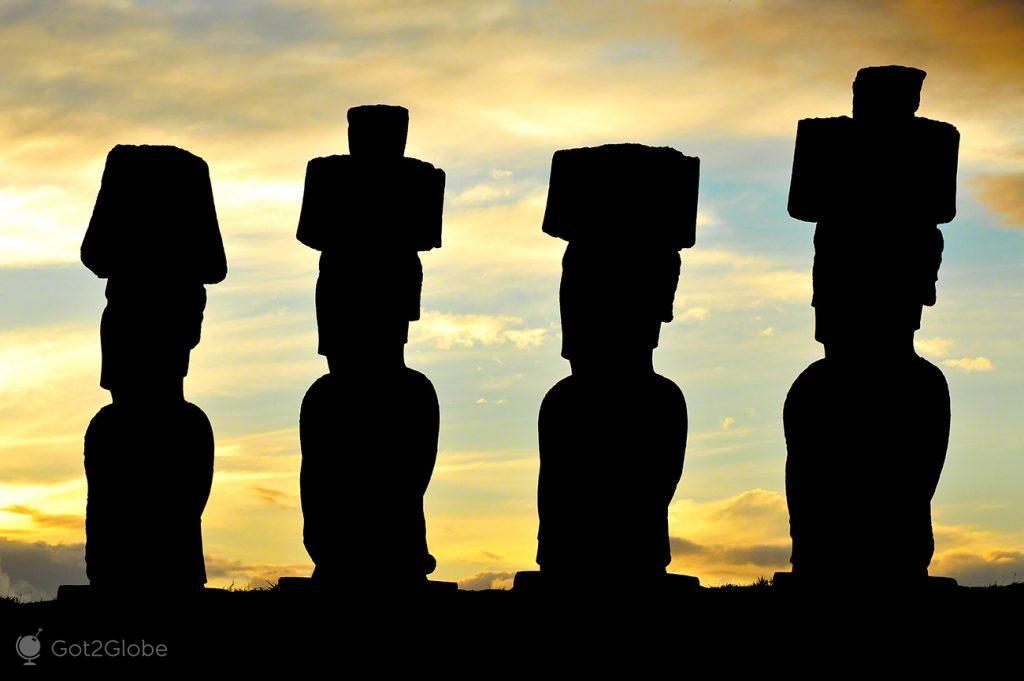
Silhouette of the rapa nui Ahu Ature Huki moai, re-erected by the Norwegian explorer Thor Heyerdahl.
And while we devoured the South American pastries, we couldn't help but feel that those moai were also watching us.
